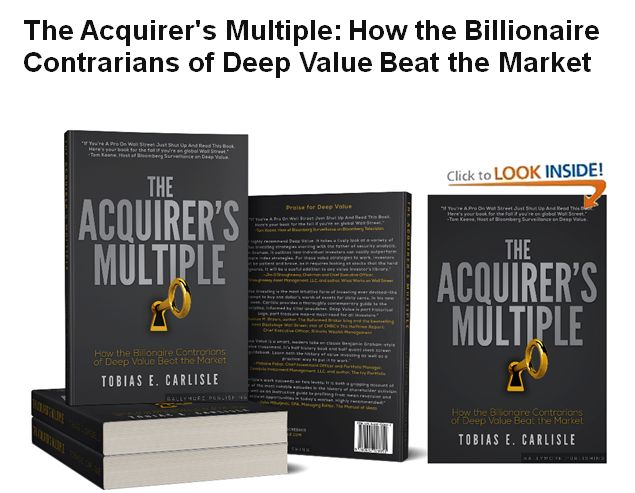During their recent episode, Taylor, Carlisle, and Ian Cassel discussed Buy and Hold Forever? The Truth About Long-Term Investing Strategies. Here’s an excerpt from the episode:
Tobias: It just didn’t sell.
Ian: It was always several hundred, you know?
Tobias: It was never sell.
Jake: [crosstalk] math pretty good though, Toby?
Tobias: Just keep buying.
Ian: Yeah.
Tobias: I have some sympathy for that approach. I think if I could get away with it, I’d do that. Never sell, just buy, because I think you get this behavior in some stocks where– I’ve talked about this a little bit before, but I’ve done these studies-
Jake: Done the math on it?
Tobias: -where I look at basically, if you buy and never sell. You can do it with any index. You can do it with the S&P 500. Just take an S&P 500, rebalance and don’t rebalance it when the committee does it next and it outperforms the S&P 500. It’s true in just about any index that I look at, the rebalancing seems to hurt. So, I think there’s a reasonable argument for just buying and holding forever.
The only thing is that after about five years, there’s nothing that is predictive, so there’s a lot of randomness in it. Its value is predictive out to about five years. But it’s not like you would think that quality would be a pretty predictive factor, but it’s not at all.
Ian: I think it works in larger public companies. I think you do it in larger companies which are more mature and robust. The shelf lives of smaller microcap companies. They’re shorter than what investors want to admit. They’re almost all cyclical. Even the winners have four to eight quarters of success, and then they stub their toe or the management teams can’t innovate another product or two to sustain the trajectory. And so, I find in microcap, nano cap, the average success is a one-to-three-year success story or window.
I think that you can do a coffee can, especially if you’re valuation centered. The key to everything is buying it, right, that your initial purchase price. And so, I think you can do that in larger ones. Like, you don’t want to be that– What’s the overused one buying Microsoft in 1999 at $58 per share with that environment where it literally took 21 years.
Jake: 14 years.
Ian: No, it took 21 years– Actually, it took 21 years to get to catch up to the S&P.
Tobias: Yeah, that makes sense.
Jake: 14 to get to break even, I think.
Ian: Yeah. It’s just stuff you and I all know, most people know, like valuation matters, your entry price matters. It’s just everything. It’s like, you can buy Costco at 60 times earnings, but if the thing just re-rates to 40 times earnings, it’s going to take six years to get back to the current price. Like, nobody wants to sit on dead money for five years. I don’t, my investors don’t, my wife doesn’t want that.
[laughter]Tobias: I think the argument is that you pick up a very small handful of giant outperformers, and so you end up at the end. I’ve always said this. The funniest thing is that even though you’re buying incremental amounts of these tiny little companies along the way– Sorry, not tiny little– tiny little amounts of these companies incrementally over a very long period of time, the ones that outperform get so big in the portfolio. They’re all the things that are working right now. They’re the things that are successful and popular now. So, your portfolio looks like this.
Jake: And you look like prescient, just genius.
Tobias: Yeah, you got this Kelly weighted portfolio. It’s not Kelly weighted, but it has that look like you got all these biggest positions are a few 8% positions, a few 5% or 6% and so on. It’s that kind of shape. From my perspective, it’s quite an attractive looking portfolio because right now, it would be Google and Apple. Because all these things have been cheap at some point over a period of time where you could have bought a little fraction of them.
Ian: Mm-hmm. Yeah.
Tobias: I can’t fit a good story to it. If I could find a good reason for why it worked, I’d probably do something with it, but I just don’t think it’s there– I can’t find the story. I don’t know why they do it other than just blind luck.
Jake: I think it’s an expected outcome of how power law driven the world is.
Ian: Yeah, you can’t escape it.
Jake: It’s just power well out turtles all the way down.
Tobias: Power well out all the way down.
You can find out more about the VALUE: After Hours Podcast here – VALUE: After Hours Podcast. You can also listen to the podcast on your favorite podcast platforms here:
For all the latest news and podcasts, join our free newsletter here.
Don’t forget to check out our FREE Large Cap 1000 – Stock Screener, here at The Acquirer’s Multiple:



